
Sample performance assessment aligned to the Science Standards of Learning.
- Subject:
- Force/Motion/Energy
- Science
- Material Type:
- Assessment
- Author:
- Anne Petersen
- Holli Cook
- Date Added:
- 12/18/2020

Sample performance assessment aligned to the Science Standards of Learning.

Sample performance assessment aligned to the Science Standards of Learning.
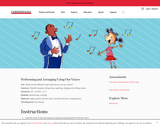
Students explore whispering, speaking, singing, and calling voices.
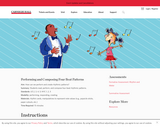
Students read, perform, and compose four-beat rhythmic patterns.
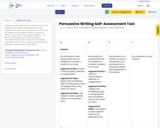
This resource provides a rubric written for high school students to self-assess their persuasive writing. Teachers may also use it for assessment. In this remix, the purpose of three different types of argument writing--arguments of fact, value, and policy--are described.
Remixed from Clarity Innovations' "Persuasive Writing Rubric--High School" available here: https://www.oercommons.org/authoring/22756-persuasive-writing-rubric-high-school.

Students write a multi-paragraph persuasive piece by developing their opinion on an issue and providing reasons/evidence that support their topic.
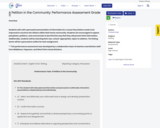
Students will craft a persuasive presentation of information for a cause they believe needs to be improved to convince the citizens within their home community. Students are encouraged to explore pamphlets, petitions, and commercials to best find the way that they will present their information. Additionally, students will be selecting their own, school-appropriate, topics to address. The linking factor will be a persuasive outline for each assignment.** This performance assessment was developed by a collaborative team of teachers and division staff from Middlesex, Poquoson, and West Point school divisions.
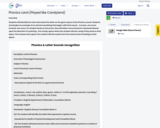
Students will identify the color and match the letter on the game space to the Phonics sound. Students should give an example of an animal something that begins with that sound. . 2 arrows, one move forward, one move, if a student lands on the arrow, they will either move forward or backward based upon the direction it is pointing. One Candy space where the student will win candy if they land on that space. One treasure box space, the student will win a prize from the treasure box if landing on that space.

Students will work independently to review short a CVC words.
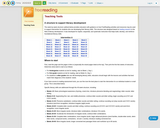
The week-by-week structure outlined below provides educators with guidance on how FreeReading activities and resources may be used to support intervention for students who are developing their literacy skills. This structure was designed based on leading research in the field of literacy development. It was developed for explicit, sequential, and systematic instruction that helps build, develop, and reinforce foundational literacy skills.

In this unit, students grapple with common second grade themes through reading the easily relatable series Pinky and Rex. Through connecting with Pinky and Rex, students will learn that it's okay to be different and to be proud of who they are, no matter what others may think. Students will also learn about what it truly means to be a good friend and how friends can support and stick up for one another in a variety of ways. They will also see that it's okay for boys and girls to be friends, even best friends. This unit builds onto multiple units from first grade in which students learned what it means to be a good friend and a good person. It is our hope that this unit deepens the understandings developed in previous grades by giving students characters to connect with. These connections are especially important for students who are struggling with some of the same issues and aren't sure how to process or talk about them.
In reading this unit is a transition from units that were predominately read aloud into a unit that is almost entirely shared or independent reading. Pinky and Rex are perfect texts for second graders, not only because of the important themes they teach but because of the way in which James Howe develops character and plot over the course of the series. As readers, students will be challenged to notice the descriptive details James Howe includes to show how characters feel in response to different problems and challenges. They will also be challenged to notice how a character's dialogue shows what they are truly feeling and how the different'said' words James Howe includes deepens that understanding. Students will also begin to analyze why certain words in a text are written in italics and what that shows about how a character is feeling. This deep dive into character will allow students to truly understand the characters and the lessons that they are learning. By reading four books in the series, students will also have the chance to see how characters develop over the course of multiple texts. By the fourth text, students will have a deeper, more nuanced understanding of all three characters.

A short interactive virtual lesson for using base ten blocks to represent numbers. Based on SOL 3.1a.
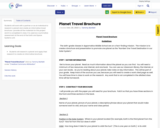
Students will work with a partner or as an individual to research a planet and create an informative travel brochure.
I provide all the materials for this project and it is completed in class.
It is used as a summative assessment at the end of the Earth and Space Systems unit.

Students will work with a partner or as an individual to research a planet and create an informative travel brochure.
I provide all the materials for this project and it is completed in class.
It is used as a summative assessment at the end of the Earth and Space Systems unit.
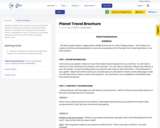
Students will work with a partner or as an individual to research a planet and create an informative travel brochure.
I provide all the materials for this project and it is completed in class.
It is used as a summative assessment at the end of the Earth and Space Systems unit.

This is a Remix of Planet Travel Brochure.
I love this activity, and I think it is a great way to learn about the planets.
Modification: Not only can this lesson be taught by making a brochure, a virtual tour could be created here. What if the students pretended that they had already visited this planet and created a video or slide show presenting their findings.
Students will work with a partner or as an individual to research a planet and create an informative travel brochure.
I provide all the materials for this project and it is completed in class.
It is used as a summative assessment at the end of the Earth and Space Systems unit.
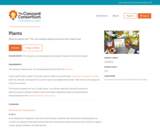
What do plants eat? This unit explores plants and how they make food.
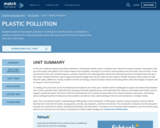
In this unit, students explore how plastic pollution is choking the world's oceans. Students learn about the history of plastic, how plastic ends up in the ocean, how plastic in the ocean impacts the ecosystem, and why it's so hard to remove plastic from the ocean once it's there. In the second half of the unit, students explore a variety of solutions for reducing plastic waste and reducing the amount of plastic that ends up in the ocean. Students will learn about large policy-based changes that can be made and also explore smaller voluntary actions they can take that will make a difference. Finally, students end the unit doing a research project aimed at educating others about the dangers of plastic and its impact on the environment.
In reading, this unit serves as the foundational informational unit of the year. Students will be challenged to explain the relationship between two or more scientific ideas, determine the meaning of domain-specific words, and understand the reasons and evidence the author uses to support a particular point. Since this is the first informational unit, routines and procedures for active annotation, discussion, and writing about reading should be introduced so that students are able to show understanding of the text and standards in multiple modes.
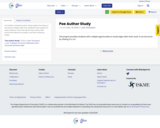
An student-centered author study project focusing on the works of Edgar Allen Poe. Students have options to read, research, and write about Poe's works, their social and historical contexts, and Poe's influence today.
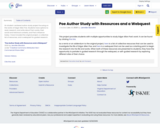
An student-centered author study project focusing on the works of Edgar Allen Poe. Students have options to read, research, and write about Poe's works, their social and historical contexts, and Poe's influence today. I have included the original project, a collective list of resources, and a webquest for guided research.